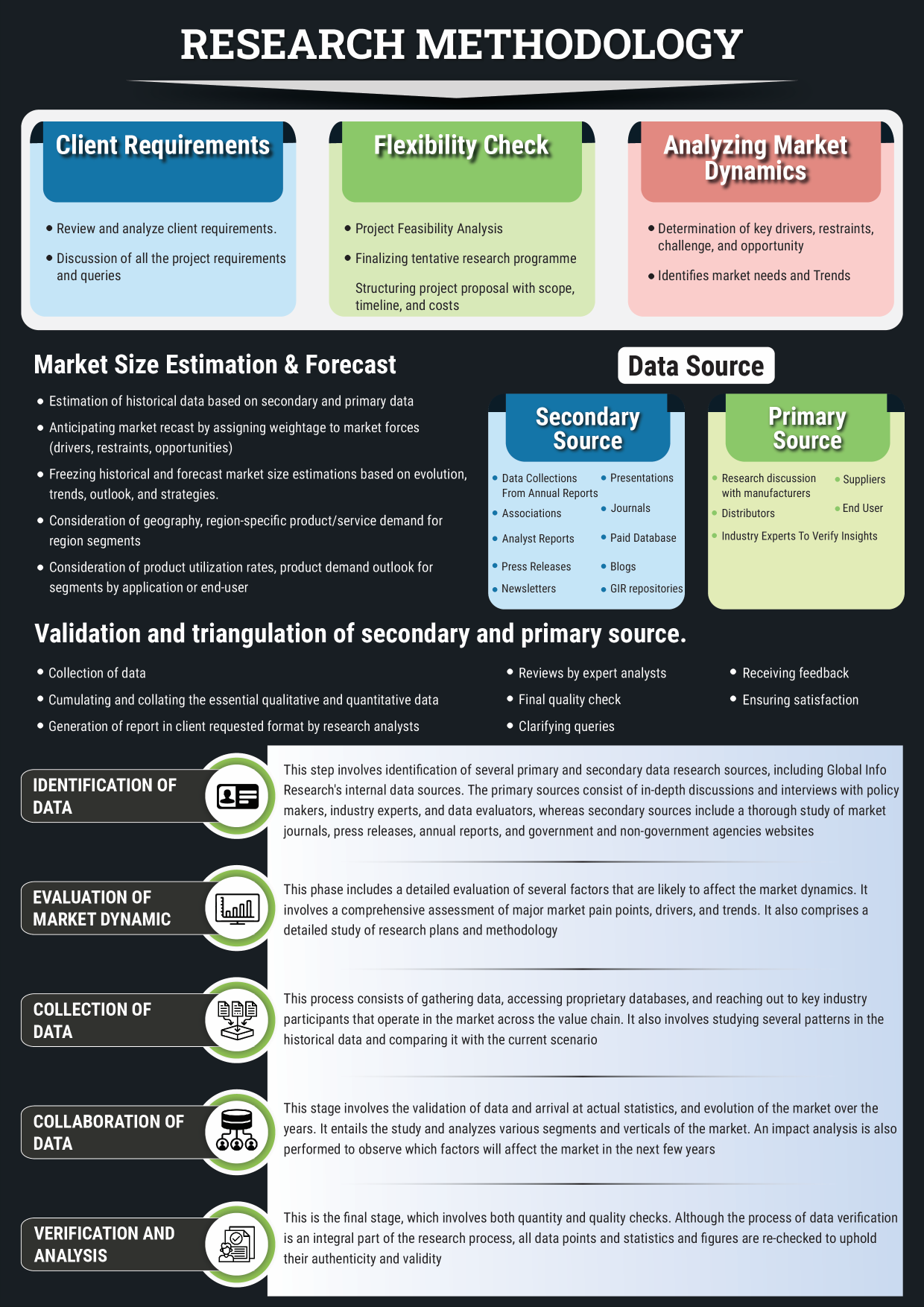Isothermal Nucleic Acid Amplification Technology (INAAT) Market 2025: Trends, Drivers, and Future Outlook
The Isothermal Nucleic Acid Amplification Technology (INAAT) market is rapidly gaining traction as a revolutionary molecular diagnostic tool. By enabling nucleic acid amplification at a constant temperature, INAAT simplifies testing, reduces costs, and accelerates time to results compared to traditional PCR methods. This makes it an ideal choice for rapid infectious disease detection, genetic screening, and point-of-care diagnostics. Heading into 2025, the INAAT market is poised for significant growth, driven by technological advances, expanding applications, and rising global demand for accessible diagnostics.
Unlike conventional nucleic acid amplification technologies that require precise thermal cycling, INAAT operates under steady temperature conditions. This fundamental difference reduces the need for complex and costly equipment, allowing amplification to be performed in simpler, more portable devices. This advantage is crucial in low-resource settings and enables faster, on-site diagnostics. As healthcare systems worldwide shift towards decentralized testing, INAAT is becoming essential in hospitals, clinics, and even home testing kits.
Key Market Drivers Accelerating INAAT Growth
The INAAT market is propelled by several interconnected factors:
- Rising Demand for Rapid and Accurate Diagnostics: Increasing incidence of infectious diseases and outbreaks demands timely diagnostic solutions. INAAT’s ability to deliver quick and reliable results supports effective disease management and containment.
- Expansion of Point-of-Care Testing: Healthcare providers emphasize patient-centric care, fueling demand for diagnostics outside centralized labs. INAAT’s simplicity, speed, and portability make it ideal for use in clinics, emergency departments, and remote areas.
- Cost-Effectiveness and Accessibility: By eliminating the need for expensive thermal cyclers, INAAT lowers testing costs and expands availability, especially in developing countries and resource-limited environments.
- Broader Application Spectrum: Beyond infectious diseases, INAAT is increasingly applied to oncology, genetic disorders, and food safety testing, opening new revenue streams.
- Advancements in Healthcare Infrastructure: Growing investments in molecular diagnostic infrastructure worldwide enhance INAAT adoption and market penetration.
Innovations Shaping the INAAT Market Landscape
Continuous innovation is transforming INAAT from a niche technology into a mainstream diagnostic solution:
- Enhanced Enzyme Formulations: New enzymes boost amplification efficiency and tolerance to inhibitors, improving test sensitivity and specificity across diverse sample types.
- Multiplexing Capabilities: Development of assays that detect multiple targets simultaneously increases diagnostic throughput and clinical utility.
- Integration with Microfluidics and Biosensors: Combining INAAT with miniaturized fluidic platforms and biosensors enables automated, rapid, and user-friendly diagnostics.
- Stabilized Reagent Kits: Lyophilized reagents that remain stable at room temperature enhance INAAT usability in field settings without cold chain requirements.
- Digital Connectivity and Data Management: Smartphone-linked devices and cloud-based platforms support remote diagnostics, data sharing, and epidemiological surveillance.
Regional Market Dynamics: Growth Opportunities and Challenges
The INAAT market exhibits distinct regional characteristics shaped by healthcare infrastructure, regulatory frameworks, and disease burden:
- North America: Leading the market due to advanced healthcare systems, high molecular diagnostics adoption, and strong R&D investments. Regulatory agencies actively support rapid diagnostics, fostering innovation.
- Europe: A mature market with growing emphasis on personalized medicine and early disease detection. Regulatory heterogeneity across countries requires tailored market entry strategies.
- Asia-Pacific: The fastest-growing region fueled by rising healthcare expenditure, large populations, and government initiatives to expand diagnostic access. Increasing incidence of infectious diseases adds urgency to INAAT adoption.
- Latin America, Middle East, and Africa: Emerging markets present growth potential driven by healthcare infrastructure improvements and rising awareness. However, regulatory hurdles and limited resources pose challenges.
Strategic Considerations for Market Players
To maximize success in the INAAT market, companies should prioritize:
- Collaborative Clinical Validation: Partnering with hospitals and research institutes to demonstrate clinical efficacy and build physician trust.
- Regulatory Strategy and Compliance: Proactively engaging regulatory bodies to expedite approvals and navigate diverse global requirements.
- Healthcare Professional Education: Providing training programs to ensure proper device usage and maximize diagnostic accuracy.
- Customized Regional Approaches: Adapting product offerings and marketing to address local disease patterns and infrastructure constraints.
- Continuous Innovation: Investing in R&D to improve multiplexing, automation, and digital integration, staying ahead of competitors.
Conclusion: INAAT Market Positioned for Sustainable Growth
The Isothermal Nucleic Acid Amplification Technology market stands at the forefront of molecular diagnostics innovation. Its unique ability to deliver rapid, reliable, and accessible testing solutions meets the growing global demand for decentralized healthcare. With ongoing advancements and strategic market execution, INAAT is set to redefine diagnostic workflows and improve patient outcomes worldwide by 2025.
Market participants that focus on innovation, clinical validation, and regional customization will unlock the full potential of this dynamic market. As healthcare moves towards more personalized, rapid, and cost-effective solutions, INAAT will play a pivotal role in shaping the future of diagnostics.
NOTE:
Quants and Trends is proud to offer an extensive portfolio of meticulously researched healthcare market reports, numbering in the thousands. We also provide tailored customization services to ensure our insights align precisely with your strategic objectives and informational needs. For personalized assistance or to discuss your specific requirements, we invite you to get in touch with our team. We also encourage you to request a complimentary sample PDF report. Please visit our Sample Request Page to receive yours today.
Key Market Players
Abbott
BioMerieux
Hologic
BD
Grifols
Quidel
Meridian Bioscience
Qiagen
Eiken Chemical
OptiGene
HiberGene Diagnostic
Lucigen
Nippon Gene
Mast Group
New England Biolabs
Ustar Biotechnologies
Segmentation By Type
LAMP
TMA
NEAR
NASBA
HDA
SPIA
Other
Segmentation By Application
Medical Diagnostic
Scientific Research
Food Testing
Environmental Hygiene
Other
Segmentation By Region
North America (United States, Canada, and Mexico)
Europe (Germany, France, UK, Russia, Italy, and Rest of Europe)
Asia-Pacific (China, Japan, South Korea, India, Southeast Asia, Australia and Rest of Asia-Pacific)
South America (Brazil, Argentina and Rest of South America)
Middle East & Africa (Turkey, Saudi Arabia, UAE, Rest of Middle East & Africa)
Market SWOT Analysis
What are the strengths of the Isothermal Nucleic Acid Amplification Technology (INAAT) market in 2025?
INAAT offers rapid, simple, and cost-effective diagnostic solutions, making it highly attractive for point-of-care testing. Its ability to function without the need for complex equipment or thermal cycling enhances accessibility, particularly in resource-limited settings.
What weaknesses could hinder the growth of the INAAT market by 2025?
Despite its advantages, INAAT faces limitations related to sensitivity and specificity when compared to traditional PCR methods. Additionally, there could be challenges related to standardization and the need for specialized training to ensure consistent results across different settings.
What opportunities exist for the INAAT market in 2025?
The growing demand for quick diagnostics, particularly in the wake of pandemics, offers a significant opportunity for INAAT. Expanding its applications in fields like infectious disease detection, food safety, and environmental monitoring could drive growth. Moreover, the increasing shift toward decentralized healthcare creates new prospects for point-of-care technologies.
What threats could affect the Isothermal Nucleic Acid Amplification Technology market by 2025?
The primary threats to INAAT are the potential development of superior, competing technologies and regulatory challenges. There could also be issues with scalability and the rising costs of raw materials. Additionally, reliance on government funding or support in some regions might pose a risk if priorities shift.
Market PESTEL Analysis
What political factors could influence the Isothermal Nucleic Acid Amplification Technology (INAAT) market in 2025?
Government regulations and healthcare policies, particularly those related to diagnostics and medical technologies, will play a significant role. Increased funding for public health initiatives and the regulation of point-of-care devices could either boost or limit market growth, depending on the political climate and priorities.
How do economic factors impact the INAAT market by 2025?
Economic conditions, especially healthcare budgets and spending on innovative technologies, will influence market adoption. In economically constrained regions, cost-effectiveness will be a key driver. Conversely, economic stability and investment in healthcare infrastructure could accelerate the growth of INAAT technologies.
What social factors might affect the INAAT market in 2025?
The increasing demand for fast, accessible healthcare services, particularly in rural and underserved areas, will drive adoption. Social trends such as a greater focus on preventive care and the growing preference for home-based healthcare solutions will favor the expansion of INAAT in point-of-care applications.
What technological factors will shape the INAAT market by 2025?
Advances in molecular biology, automation, and miniaturization will enable more efficient and accurate INAAT devices. Technological integration with digital health platforms, such as telemedicine and real-time diagnostics, will open new avenues for growth, enhancing the appeal of INAAT technologies for both clinical and consumer use.
What environmental factors should be considered for the INAAT market in 2025?
Environmental concerns surrounding waste disposal from diagnostic kits and energy consumption during testing procedures could influence the market. Innovations in eco-friendly packaging and energy-efficient devices will be critical in mitigating these concerns and gaining acceptance in environmentally conscious markets.
What legal factors could affect the INAAT market in 2025?
Regulatory approvals and intellectual property rights will be pivotal in determining the pace of market entry and competition. Legal requirements for certification, quality control, and compliance with healthcare standards will shape how companies approach product development and market expansion in the INAAT field.
Market SIPOC Analysis
Who are the suppliers in the Isothermal Nucleic Acid Amplification Technology (INAAT) market in 2025?
Suppliers include manufacturers of reagents, primers, and enzymes specific to INAAT processes. Equipment suppliers providing portable, point-of-care diagnostic devices and companies specializing in raw materials for consumables also play a critical role in the supply chain.
What inputs are necessary for the INAAT market to function effectively?
Key inputs include high-quality nucleic acids, specialized reagents, enzymes for amplification, as well as the technology for detection (such as sensors or portable diagnostic devices). Additionally, the availability of data and software for interpreting test results is vital.
Who are the process owners or key stakeholders in the INAAT market?
Process owners involve research and development teams from biotech companies and diagnostic firms, healthcare providers who implement the technology in clinics or hospitals, and regulatory bodies that ensure compliance with health and safety standards.
What are the outputs of the INAAT market?
The outputs are rapid, accurate diagnostic results, including nucleic acid amplification results for a range of pathogens, disease markers, or genetic conditions. These results are crucial for informing patient care, disease management, and public health responses.
Who are the customers of the INAAT market?
Customers include healthcare institutions, clinics, and diagnostic laboratories that require fast and reliable diagnostics. Other customers are governments, public health organizations, and consumers who are looking for convenient point-of-care testing solutions.
Market Porter's Five Forces
How strong is the threat of new entrants in the INAAT market in 2025?
The threat of new entrants is moderate. While the technological barriers to entry are relatively low compared to more complex diagnostics, the market requires substantial investment in research, regulatory approval, and distribution networks. Established players have strong brand recognition and customer trust, which can make it challenging for new companies to penetrate.
How intense is the rivalry among existing competitors in the INAAT market?
The rivalry among existing competitors is high. Numerous companies are striving to develop and refine INAAT solutions, and competition is driven by innovation, pricing strategies, and regulatory approvals. The growing demand for rapid diagnostics and decentralized healthcare further intensifies competition.
What is the bargaining power of suppliers in the INAAT market?
The bargaining power of suppliers is moderate. Suppliers of specialized reagents and enzymes for INAAT play an essential role, but there are multiple suppliers for these components. While some raw materials may be proprietary, the availability of alternative suppliers reduces the overall bargaining power of individual suppliers.
What is the bargaining power of buyers in the INAAT market?
The bargaining power of buyers is moderate to high. Healthcare providers and diagnostic laboratories often seek cost-effective and reliable solutions, giving them some leverage over pricing. However, the need for high-quality, accurate diagnostic tools and the limited number of providers with fully optimized solutions can reduce buyer power to some extent.
How strong is the threat of substitute products or services in the INAAT market?
The threat of substitutes is moderate. Traditional PCR methods and other nucleic acid amplification technologies can be considered substitutes, although INAAT offers significant advantages in terms of speed and ease of use. However, if other emerging technologies improve on the current limitations of INAAT, they could pose a threat to market growth.
Market Upstream Analysis
What are the key raw materials involved in the INAAT market in 2025?
The key raw materials include high-quality nucleic acids, reagents, primers, and enzymes that are necessary for the amplification process. Additionally, consumables such as diagnostic kits, testing equipment, and chemicals for detection are essential to support INAAT-based testing.
Who are the primary suppliers in the INAAT supply chain?
Primary suppliers include biotechnology companies that provide the enzymes and reagents for amplification, as well as manufacturers of diagnostic devices, sensors, and consumables. These suppliers also play a critical role in developing the hardware and software systems used for real-time data analysis and interpretation.
What technological advancements are influencing the upstream part of the INAAT market?
Technological advancements in molecular biology, miniaturization of diagnostic devices, and automation are significantly influencing the upstream part of the market. Innovations in enzyme engineering, as well as improvements in point-of-care device development, are critical for enhancing the efficiency and accuracy of INAAT systems.
What are the regulatory challenges for upstream players in the INAAT market?
Upstream players face regulatory challenges related to compliance with health and safety standards, as well as obtaining certifications for new reagents and devices. The complexity of regulatory approval processes in different regions can slow down the introduction of new materials or technologies into the market.
How does the cost of raw materials affect the INAAT market?
The cost of raw materials, such as specialized reagents and enzymes, can have a direct impact on the pricing and affordability of INAAT-based diagnostic products. Fluctuations in the prices of raw materials, especially in global supply chains, can affect manufacturers' ability to maintain competitive pricing while ensuring high-quality products.
Market Midstream Analysis
What are the key players in the midstream segment of the INAAT market in 2025?
Key players in the midstream segment include companies that focus on the development, manufacturing, and distribution of INAAT devices and systems. These companies typically work on the integration of amplification technologies with detection systems, packaging the final diagnostic solutions for clinical or point-of-care applications.
How do distribution channels impact the INAAT market?
Distribution channels play a crucial role in the midstream segment. Companies must establish efficient, widespread channels to ensure that INAAT products reach healthcare providers, diagnostic labs, and end-users. The ability to provide timely and reliable distribution is essential to meet the increasing demand for rapid diagnostics in diverse geographic areas.
What are the technological developments influencing the midstream segment of the INAAT market?
Technological developments in automation, data integration, and portability are key factors driving the midstream segment. The ability to integrate INAAT devices with mobile health platforms, real-time result analysis software, and telemedicine solutions will be a major driver for market expansion and adoption.
What are the logistical challenges faced by midstream players in the INAAT market?
Logistical challenges include maintaining a reliable supply chain for raw materials and finished products, ensuring the quality and integrity of diagnostic kits during transportation, and managing the costs of distribution across various regions, especially in resource-limited settings. Timely delivery and storage under proper conditions are crucial for product efficacy.
How does the regulatory environment impact the midstream segment of the INAAT market?
The regulatory environment significantly impacts the midstream segment. Companies need to ensure compliance with local, regional, and global regulations for medical devices and diagnostics. The approval process for new devices and ongoing compliance with quality control standards can affect time-to-market and product availability.
Market Downstream Analysis
Who are the primary customers in the downstream segment of the INAAT market in 2025?
Primary customers in the downstream segment include healthcare providers, diagnostic laboratories, hospitals, clinics, and public health organizations. Additionally, point-of-care users and consumers in home diagnostics may also represent a growing customer base as the technology becomes more accessible.
What factors influence the adoption of INAAT technologies in the downstream market?
The adoption of INAAT technologies is influenced by factors such as the ease of use, cost-effectiveness, and accuracy of results. The growing demand for rapid, on-site diagnostic solutions, particularly in remote areas or low-resource settings, also plays a significant role. Additionally, regulatory approvals and reimbursement policies will impact adoption rates.
How do healthcare providers perceive the value of INAAT in the downstream market?
Healthcare providers value INAAT for its rapid diagnostic capabilities, cost-efficiency, and ease of integration into point-of-care settings. The ability to offer fast, reliable results without the need for complex lab setups aligns with the increasing demand for decentralized healthcare solutions and improves patient outcomes.
What are the challenges faced by downstream players in the INAAT market?
Downstream players face challenges related to the integration of INAAT systems into existing healthcare infrastructures, particularly in terms of training staff and ensuring consistency in results. Market fragmentation and price sensitivity in different regions also create barriers to broader adoption and scalability.
How do regulatory and reimbursement policies impact the downstream segment of the INAAT market?
Regulatory approval is critical for market entry, as it ensures the safety and effectiveness of INAAT products. Reimbursement policies also play a key role, as healthcare providers are more likely to adopt these technologies if they are financially supported by insurance or government healthcare programs. Stringent regulations can delay product availability but ultimately ensure market trust and credibility.
Chapter 1, to describe Isothermal Nucleic Acid Amplification Technology (INAAT) product scope, market overview, market estimation caveats and base year.
Chapter 2, to profile the top players of Isothermal Nucleic Acid Amplification Technology (INAAT), with revenue, gross margin and global market share of Isothermal Nucleic Acid Amplification Technology (INAAT) from 2018 to 2023.
Chapter 3, the Isothermal Nucleic Acid Amplification Technology (INAAT) competitive situation, revenue and global market share of top players are analyzed emphatically by landscape contrast.
Chapter 4 and 5, to segment the market size by Type and application, with consumption value and growth rate by Type, application, from 2018 to 2029.
Chapter 6, 7, 8, 9, and 10, to break the market size data at the country level, with revenue and market share for key countries in the world, from 2018 to 2023.and Isothermal Nucleic Acid Amplification Technology (INAAT) market forecast, by regions, type and application, with consumption value, from 2024 to 2029.
Chapter 11, market dynamics, drivers, restraints, trends, Porters Five Forces analysis, and Influence of COVID-19 and Russia-Ukraine War
Chapter 12, the key raw materials and key suppliers, and industry chain of Isothermal Nucleic Acid Amplification Technology (INAAT).
Chapter 13, to describe Isothermal Nucleic Acid Amplification Technology (INAAT) research findings and conclusion.
1 Market Overview
1.1 Product Overview and Scope of Isothermal Nucleic Acid Amplification Technology (INAAT)
1.2 Market Estimation Caveats and Base Year
1.3 Classification of Isothermal Nucleic Acid Amplification Technology (INAAT) by Type
1.3.1 Overview: Global Isothermal Nucleic Acid Amplification Technology (INAAT) Market Size by Type: 2018 Versus 2022 Versus 2029
1.3.2 Global Isothermal Nucleic Acid Amplification Technology (INAAT) Consumption Value Market Share by Type in 2022
1.3.3 LAMP
1.3.4 TMA
1.3.5 NEAR
1.3.6 NASBA
1.3.7 HDA
1.3.8 SPIA
1.3.9 Other
1.4 Global Isothermal Nucleic Acid Amplification Technology (INAAT) Market by Application
1.4.1 Overview: Global Isothermal Nucleic Acid Amplification Technology (INAAT) Market Size by Application: 2018 Versus 2022 Versus 2029
1.4.2 Medical Diagnostic
1.4.3 Scientific Research
1.4.4 Food Testing
1.4.5 Environmental Hygiene
1.4.6 Other
1.5 Global Isothermal Nucleic Acid Amplification Technology (INAAT) Market Size & Forecast
1.6 Global Isothermal Nucleic Acid Amplification Technology (INAAT) Market Size and Forecast by Region
1.6.1 Global Isothermal Nucleic Acid Amplification Technology (INAAT) Market Size by Region: 2018 VS 2022 VS 2029
1.6.2 Global Isothermal Nucleic Acid Amplification Technology (INAAT) Market Size by Region, (2018-2029)
1.6.3 North America Isothermal Nucleic Acid Amplification Technology (INAAT) Market Size and Prospect (2018-2029)
1.6.4 Europe Isothermal Nucleic Acid Amplification Technology (INAAT) Market Size and Prospect (2018-2029)
1.6.5 Asia-Pacific Isothermal Nucleic Acid Amplification Technology (INAAT) Market Size and Prospect (2018-2029)
1.6.6 South America Isothermal Nucleic Acid Amplification Technology (INAAT) Market Size and Prospect (2018-2029)
1.6.7 Middle East and Africa Isothermal Nucleic Acid Amplification Technology (INAAT) Market Size and Prospect (2018-2029)
2 Company Profiles
2.1 Abbott
2.1.1 Abbott Details
2.1.2 Abbott Major Business
2.1.3 Abbott Isothermal Nucleic Acid Amplification Technology (INAAT) Product and Solutions
2.1.4 Abbott Isothermal Nucleic Acid Amplification Technology (INAAT) Revenue, Gross Margin and Market Share (2018-2023)
2.1.5 Abbott Recent Developments and Future Plans
2.2 BioMerieux
2.2.1 BioMerieux Details
2.2.2 BioMerieux Major Business
2.2.3 BioMerieux Isothermal Nucleic Acid Amplification Technology (INAAT) Product and Solutions
2.2.4 BioMerieux Isothermal Nucleic Acid Amplification Technology (INAAT) Revenue, Gross Margin and Market Share (2018-2023)
2.2.5 BioMerieux Recent Developments and Future Plans
2.3 Hologic
2.3.1 Hologic Details
2.3.2 Hologic Major Business
2.3.3 Hologic Isothermal Nucleic Acid Amplification Technology (INAAT) Product and Solutions
2.3.4 Hologic Isothermal Nucleic Acid Amplification Technology (INAAT) Revenue, Gross Margin and Market Share (2018-2023)
2.3.5 Hologic Recent Developments and Future Plans
2.4 BD
2.4.1 BD Details
2.4.2 BD Major Business
2.4.3 BD Isothermal Nucleic Acid Amplification Technology (INAAT) Product and Solutions
2.4.4 BD Isothermal Nucleic Acid Amplification Technology (INAAT) Revenue, Gross Margin and Market Share (2018-2023)
2.4.5 BD Recent Developments and Future Plans
2.5 Grifols
2.5.1 Grifols Details
2.5.2 Grifols Major Business
2.5.3 Grifols Isothermal Nucleic Acid Amplification Technology (INAAT) Product and Solutions
2.5.4 Grifols Isothermal Nucleic Acid Amplification Technology (INAAT) Revenue, Gross Margin and Market Share (2018-2023)
2.5.5 Grifols Recent Developments and Future Plans
2.6 Quidel
2.6.1 Quidel Details
2.6.2 Quidel Major Business
2.6.3 Quidel Isothermal Nucleic Acid Amplification Technology (INAAT) Product and Solutions
2.6.4 Quidel Isothermal Nucleic Acid Amplification Technology (INAAT) Revenue, Gross Margin and Market Share (2018-2023)
2.6.5 Quidel Recent Developments and Future Plans
2.7 Meridian Bioscience
2.7.1 Meridian Bioscience Details
2.7.2 Meridian Bioscience Major Business
2.7.3 Meridian Bioscience Isothermal Nucleic Acid Amplification Technology (INAAT) Product and Solutions
2.7.4 Meridian Bioscience Isothermal Nucleic Acid Amplification Technology (INAAT) Revenue, Gross Margin and Market Share (2018-2023)
2.7.5 Meridian Bioscience Recent Developments and Future Plans
2.8 Qiagen
2.8.1 Qiagen Details
2.8.2 Qiagen Major Business
2.8.3 Qiagen Isothermal Nucleic Acid Amplification Technology (INAAT) Product and Solutions
2.8.4 Qiagen Isothermal Nucleic Acid Amplification Technology (INAAT) Revenue, Gross Margin and Market Share (2018-2023)
2.8.5 Qiagen Recent Developments and Future Plans
2.9 Eiken Chemical
2.9.1 Eiken Chemical Details
2.9.2 Eiken Chemical Major Business
2.9.3 Eiken Chemical Isothermal Nucleic Acid Amplification Technology (INAAT) Product and Solutions
2.9.4 Eiken Chemical Isothermal Nucleic Acid Amplification Technology (INAAT) Revenue, Gross Margin and Market Share (2018-2023)
2.9.5 Eiken Chemical Recent Developments and Future Plans
2.10 OptiGene
2.10.1 OptiGene Details
2.10.2 OptiGene Major Business
2.10.3 OptiGene Isothermal Nucleic Acid Amplification Technology (INAAT) Product and Solutions
2.10.4 OptiGene Isothermal Nucleic Acid Amplification Technology (INAAT) Revenue, Gross Margin and Market Share (2018-2023)
2.10.5 OptiGene Recent Developments and Future Plans
2.11 HiberGene Diagnostic
2.11.1 HiberGene Diagnostic Details
2.11.2 HiberGene Diagnostic Major Business
2.11.3 HiberGene Diagnostic Isothermal Nucleic Acid Amplification Technology (INAAT) Product and Solutions
2.11.4 HiberGene Diagnostic Isothermal Nucleic Acid Amplification Technology (INAAT) Revenue, Gross Margin and Market Share (2018-2023)
2.11.5 HiberGene Diagnostic Recent Developments and Future Plans
2.12 Lucigen
2.12.1 Lucigen Details
2.12.2 Lucigen Major Business
2.12.3 Lucigen Isothermal Nucleic Acid Amplification Technology (INAAT) Product and Solutions
2.12.4 Lucigen Isothermal Nucleic Acid Amplification Technology (INAAT) Revenue, Gross Margin and Market Share (2018-2023)
2.12.5 Lucigen Recent Developments and Future Plans
2.13 Nippon Gene
2.13.1 Nippon Gene Details
2.13.2 Nippon Gene Major Business
2.13.3 Nippon Gene Isothermal Nucleic Acid Amplification Technology (INAAT) Product and Solutions
2.13.4 Nippon Gene Isothermal Nucleic Acid Amplification Technology (INAAT) Revenue, Gross Margin and Market Share (2018-2023)
2.13.5 Nippon Gene Recent Developments and Future Plans
2.14 Mast Group
2.14.1 Mast Group Details
2.14.2 Mast Group Major Business
2.14.3 Mast Group Isothermal Nucleic Acid Amplification Technology (INAAT) Product and Solutions
2.14.4 Mast Group Isothermal Nucleic Acid Amplification Technology (INAAT) Revenue, Gross Margin and Market Share (2018-2023)
2.14.5 Mast Group Recent Developments and Future Plans
2.15 New England Biolabs
2.15.1 New England Biolabs Details
2.15.2 New England Biolabs Major Business
2.15.3 New England Biolabs Isothermal Nucleic Acid Amplification Technology (INAAT) Product and Solutions
2.15.4 New England Biolabs Isothermal Nucleic Acid Amplification Technology (INAAT) Revenue, Gross Margin and Market Share (2018-2023)
2.15.5 New England Biolabs Recent Developments and Future Plans
2.16 Ustar Biotechnologies
2.16.1 Ustar Biotechnologies Details
2.16.2 Ustar Biotechnologies Major Business
2.16.3 Ustar Biotechnologies Isothermal Nucleic Acid Amplification Technology (INAAT) Product and Solutions
2.16.4 Ustar Biotechnologies Isothermal Nucleic Acid Amplification Technology (INAAT) Revenue, Gross Margin and Market Share (2018-2023)
2.16.5 Ustar Biotechnologies Recent Developments and Future Plans
3 Market Competition, by Players
3.1 Global Isothermal Nucleic Acid Amplification Technology (INAAT) Revenue and Share by Players (2018-2023)
3.2 Market Share Analysis (2022)
3.2.1 Market Share of Isothermal Nucleic Acid Amplification Technology (INAAT) by Company Revenue
3.2.2 Top 3 Isothermal Nucleic Acid Amplification Technology (INAAT) Players Market Share in 2022
3.2.3 Top 6 Isothermal Nucleic Acid Amplification Technology (INAAT) Players Market Share in 2022
3.3 Isothermal Nucleic Acid Amplification Technology (INAAT) Market: Overall Company Footprint Analysis
3.3.1 Isothermal Nucleic Acid Amplification Technology (INAAT) Market: Region Footprint
3.3.2 Isothermal Nucleic Acid Amplification Technology (INAAT) Market: Company Product Type Footprint
3.3.3 Isothermal Nucleic Acid Amplification Technology (INAAT) Market: Company Product Application Footprint
3.4 New Market Entrants and Barriers to Market Entry
3.5 Mergers, Acquisition, Agreements, and Collaborations
4 Market Size Segment by Type
4.1 Global Isothermal Nucleic Acid Amplification Technology (INAAT) Consumption Value and Market Share by Type (2018-2023)
4.2 Global Isothermal Nucleic Acid Amplification Technology (INAAT) Market Forecast by Type (2024-2029)
5 Market Size Segment by Application
5.1 Global Isothermal Nucleic Acid Amplification Technology (INAAT) Consumption Value Market Share by Application (2018-2023)
5.2 Global Isothermal Nucleic Acid Amplification Technology (INAAT) Market Forecast by Application (2024-2029)
6 North America
6.1 North America Isothermal Nucleic Acid Amplification Technology (INAAT) Consumption Value by Type (2018-2029)
6.2 North America Isothermal Nucleic Acid Amplification Technology (INAAT) Consumption Value by Application (2018-2029)
6.3 North America Isothermal Nucleic Acid Amplification Technology (INAAT) Market Size by Country
6.3.1 North America Isothermal Nucleic Acid Amplification Technology (INAAT) Consumption Value by Country (2018-2029)
6.3.2 United States Isothermal Nucleic Acid Amplification Technology (INAAT) Market Size and Forecast (2018-2029)
6.3.3 Canada Isothermal Nucleic Acid Amplification Technology (INAAT) Market Size and Forecast (2018-2029)
6.3.4 Mexico Isothermal Nucleic Acid Amplification Technology (INAAT) Market Size and Forecast (2018-2029)
7 Europe
7.1 Europe Isothermal Nucleic Acid Amplification Technology (INAAT) Consumption Value by Type (2018-2029)
7.2 Europe Isothermal Nucleic Acid Amplification Technology (INAAT) Consumption Value by Application (2018-2029)
7.3 Europe Isothermal Nucleic Acid Amplification Technology (INAAT) Market Size by Country
7.3.1 Europe Isothermal Nucleic Acid Amplification Technology (INAAT) Consumption Value by Country (2018-2029)
7.3.2 Germany Isothermal Nucleic Acid Amplification Technology (INAAT) Market Size and Forecast (2018-2029)
7.3.3 France Isothermal Nucleic Acid Amplification Technology (INAAT) Market Size and Forecast (2018-2029)
7.3.4 United Kingdom Isothermal Nucleic Acid Amplification Technology (INAAT) Market Size and Forecast (2018-2029)
7.3.5 Russia Isothermal Nucleic Acid Amplification Technology (INAAT) Market Size and Forecast (2018-2029)
7.3.6 Italy Isothermal Nucleic Acid Amplification Technology (INAAT) Market Size and Forecast (2018-2029)
8 Asia-Pacific
8.1 Asia-Pacific Isothermal Nucleic Acid Amplification Technology (INAAT) Consumption Value by Type (2018-2029)
8.2 Asia-Pacific Isothermal Nucleic Acid Amplification Technology (INAAT) Consumption Value by Application (2018-2029)
8.3 Asia-Pacific Isothermal Nucleic Acid Amplification Technology (INAAT) Market Size by Region
8.3.1 Asia-Pacific Isothermal Nucleic Acid Amplification Technology (INAAT) Consumption Value by Region (2018-2029)
8.3.2 China Isothermal Nucleic Acid Amplification Technology (INAAT) Market Size and Forecast (2018-2029)
8.3.3 Japan Isothermal Nucleic Acid Amplification Technology (INAAT) Market Size and Forecast (2018-2029)
8.3.4 South Korea Isothermal Nucleic Acid Amplification Technology (INAAT) Market Size and Forecast (2018-2029)
8.3.5 India Isothermal Nucleic Acid Amplification Technology (INAAT) Market Size and Forecast (2018-2029)
8.3.6 Southeast Asia Isothermal Nucleic Acid Amplification Technology (INAAT) Market Size and Forecast (2018-2029)
8.3.7 Australia Isothermal Nucleic Acid Amplification Technology (INAAT) Market Size and Forecast (2018-2029)
9 South America
9.1 South America Isothermal Nucleic Acid Amplification Technology (INAAT) Consumption Value by Type (2018-2029)
9.2 South America Isothermal Nucleic Acid Amplification Technology (INAAT) Consumption Value by Application (2018-2029)
9.3 South America Isothermal Nucleic Acid Amplification Technology (INAAT) Market Size by Country
9.3.1 South America Isothermal Nucleic Acid Amplification Technology (INAAT) Consumption Value by Country (2018-2029)
9.3.2 Brazil Isothermal Nucleic Acid Amplification Technology (INAAT) Market Size and Forecast (2018-2029)
9.3.3 Argentina Isothermal Nucleic Acid Amplification Technology (INAAT) Market Size and Forecast (2018-2029)
10 Middle East & Africa
10.1 Middle East & Africa Isothermal Nucleic Acid Amplification Technology (INAAT) Consumption Value by Type (2018-2029)
10.2 Middle East & Africa Isothermal Nucleic Acid Amplification Technology (INAAT) Consumption Value by Application (2018-2029)
10.3 Middle East & Africa Isothermal Nucleic Acid Amplification Technology (INAAT) Market Size by Country
10.3.1 Middle East & Africa Isothermal Nucleic Acid Amplification Technology (INAAT) Consumption Value by Country (2018-2029)
10.3.2 Turkey Isothermal Nucleic Acid Amplification Technology (INAAT) Market Size and Forecast (2018-2029)
10.3.3 Saudi Arabia Isothermal Nucleic Acid Amplification Technology (INAAT) Market Size and Forecast (2018-2029)
10.3.4 UAE Isothermal Nucleic Acid Amplification Technology (INAAT) Market Size and Forecast (2018-2029)
11 Market Dynamics
11.1 Isothermal Nucleic Acid Amplification Technology (INAAT) Market Drivers
11.2 Isothermal Nucleic Acid Amplification Technology (INAAT) Market Restraints
11.3 Isothermal Nucleic Acid Amplification Technology (INAAT) Trends Analysis
11.4 Porters Five Forces Analysis
11.4.1 Threat of New Entrants
11.4.2 Bargaining Power of Suppliers
11.4.3 Bargaining Power of Buyers
11.4.4 Threat of Substitutes
11.4.5 Competitive Rivalry
11.5 Influence of COVID-19 and Russia-Ukraine War
11.5.1 Influence of COVID-19
11.5.2 Influence of Russia-Ukraine War
12 Industry Chain Analysis
12.1 Isothermal Nucleic Acid Amplification Technology (INAAT) Industry Chain
12.2 Isothermal Nucleic Acid Amplification Technology (INAAT) Upstream Analysis
12.3 Isothermal Nucleic Acid Amplification Technology (INAAT) Midstream Analysis
12.4 Isothermal Nucleic Acid Amplification Technology (INAAT) Downstream Analysis
13 Research Findings and Conclusion
14 Appendix
14.1 Methodology
14.2 Research Process and Data Source
14.3 Disclaimer
List of Tables
Table 1. Global Isothermal Nucleic Acid Amplification Technology (INAAT) Consumption Value by Type, (USD Million), 2018 & 2022 & 2029
Table 2. Global Isothermal Nucleic Acid Amplification Technology (INAAT) Consumption Value by Application, (USD Million), 2018 & 2022 & 2029
Table 3. Global Isothermal Nucleic Acid Amplification Technology (INAAT) Consumption Value by Region (2018-2023) & (USD Million)
Table 4. Global Isothermal Nucleic Acid Amplification Technology (INAAT) Consumption Value by Region (2024-2029) & (USD Million)
Table 5. Abbott Company Information, Head Office, and Major Competitors
Table 6. Abbott Major Business
Table 7. Abbott Isothermal Nucleic Acid Amplification Technology (INAAT) Product and Solutions
Table 8. Abbott Isothermal Nucleic Acid Amplification Technology (INAAT) Revenue (USD Million), Gross Margin and Market Share (2018-2023)
Table 9. Abbott Recent Developments and Future Plans
Table 10. BioMerieux Company Information, Head Office, and Major Competitors
Table 11. BioMerieux Major Business
Table 12. BioMerieux Isothermal Nucleic Acid Amplification Technology (INAAT) Product and Solutions
Table 13. BioMerieux Isothermal Nucleic Acid Amplification Technology (INAAT) Revenue (USD Million), Gross Margin and Market Share (2018-2023)
Table 14. BioMerieux Recent Developments and Future Plans
Table 15. Hologic Company Information, Head Office, and Major Competitors
Table 16. Hologic Major Business
Table 17. Hologic Isothermal Nucleic Acid Amplification Technology (INAAT) Product and Solutions
Table 18. Hologic Isothermal Nucleic Acid Amplification Technology (INAAT) Revenue (USD Million), Gross Margin and Market Share (2018-2023)
Table 19. Hologic Recent Developments and Future Plans
Table 20. BD Company Information, Head Office, and Major Competitors
Table 21. BD Major Business
Table 22. BD Isothermal Nucleic Acid Amplification Technology (INAAT) Product and Solutions
Table 23. BD Isothermal Nucleic Acid Amplification Technology (INAAT) Revenue (USD Million), Gross Margin and Market Share (2018-2023)
Table 24. BD Recent Developments and Future Plans
Table 25. Grifols Company Information, Head Office, and Major Competitors
Table 26. Grifols Major Business
Table 27. Grifols Isothermal Nucleic Acid Amplification Technology (INAAT) Product and Solutions
Table 28. Grifols Isothermal Nucleic Acid Amplification Technology (INAAT) Revenue (USD Million), Gross Margin and Market Share (2018-2023)
Table 29. Grifols Recent Developments and Future Plans
Table 30. Quidel Company Information, Head Office, and Major Competitors
Table 31. Quidel Major Business
Table 32. Quidel Isothermal Nucleic Acid Amplification Technology (INAAT) Product and Solutions
Table 33. Quidel Isothermal Nucleic Acid Amplification Technology (INAAT) Revenue (USD Million), Gross Margin and Market Share (2018-2023)
Table 34. Quidel Recent Developments and Future Plans
Table 35. Meridian Bioscience Company Information, Head Office, and Major Competitors
Table 36. Meridian Bioscience Major Business
Table 37. Meridian Bioscience Isothermal Nucleic Acid Amplification Technology (INAAT) Product and Solutions
Table 38. Meridian Bioscience Isothermal Nucleic Acid Amplification Technology (INAAT) Revenue (USD Million), Gross Margin and Market Share (2018-2023)
Table 39. Meridian Bioscience Recent Developments and Future Plans
Table 40. Qiagen Company Information, Head Office, and Major Competitors
Table 41. Qiagen Major Business
Table 42. Qiagen Isothermal Nucleic Acid Amplification Technology (INAAT) Product and Solutions
Table 43. Qiagen Isothermal Nucleic Acid Amplification Technology (INAAT) Revenue (USD Million), Gross Margin and Market Share (2018-2023)
Table 44. Qiagen Recent Developments and Future Plans
Table 45. Eiken Chemical Company Information, Head Office, and Major Competitors
Table 46. Eiken Chemical Major Business
Table 47. Eiken Chemical Isothermal Nucleic Acid Amplification Technology (INAAT) Product and Solutions
Table 48. Eiken Chemical Isothermal Nucleic Acid Amplification Technology (INAAT) Revenue (USD Million), Gross Margin and Market Share (2018-2023)
Table 49. Eiken Chemical Recent Developments and Future Plans
Table 50. OptiGene Company Information, Head Office, and Major Competitors
Table 51. OptiGene Major Business
Table 52. OptiGene Isothermal Nucleic Acid Amplification Technology (INAAT) Product and Solutions
Table 53. OptiGene Isothermal Nucleic Acid Amplification Technology (INAAT) Revenue (USD Million), Gross Margin and Market Share (2018-2023)
Table 54. OptiGene Recent Developments and Future Plans
Table 55. HiberGene Diagnostic Company Information, Head Office, and Major Competitors
Table 56. HiberGene Diagnostic Major Business
Table 57. HiberGene Diagnostic Isothermal Nucleic Acid Amplification Technology (INAAT) Product and Solutions
Table 58. HiberGene Diagnostic Isothermal Nucleic Acid Amplification Technology (INAAT) Revenue (USD Million), Gross Margin and Market Share (2018-2023)
Table 59. HiberGene Diagnostic Recent Developments and Future Plans
Table 60. Lucigen Company Information, Head Office, and Major Competitors
Table 61. Lucigen Major Business
Table 62. Lucigen Isothermal Nucleic Acid Amplification Technology (INAAT) Product and Solutions
Table 63. Lucigen Isothermal Nucleic Acid Amplification Technology (INAAT) Revenue (USD Million), Gross Margin and Market Share (2018-2023)
Table 64. Lucigen Recent Developments and Future Plans
Table 65. Nippon Gene Company Information, Head Office, and Major Competitors
Table 66. Nippon Gene Major Business
Table 67. Nippon Gene Isothermal Nucleic Acid Amplification Technology (INAAT) Product and Solutions
Table 68. Nippon Gene Isothermal Nucleic Acid Amplification Technology (INAAT) Revenue (USD Million), Gross Margin and Market Share (2018-2023)
Table 69. Nippon Gene Recent Developments and Future Plans
Table 70. Mast Group Company Information, Head Office, and Major Competitors
Table 71. Mast Group Major Business
Table 72. Mast Group Isothermal Nucleic Acid Amplification Technology (INAAT) Product and Solutions
Table 73. Mast Group Isothermal Nucleic Acid Amplification Technology (INAAT) Revenue (USD Million), Gross Margin and Market Share (2018-2023)
Table 74. Mast Group Recent Developments and Future Plans
Table 75. New England Biolabs Company Information, Head Office, and Major Competitors
Table 76. New England Biolabs Major Business
Table 77. New England Biolabs Isothermal Nucleic Acid Amplification Technology (INAAT) Product and Solutions
Table 78. New England Biolabs Isothermal Nucleic Acid Amplification Technology (INAAT) Revenue (USD Million), Gross Margin and Market Share (2018-2023)
Table 79. New England Biolabs Recent Developments and Future Plans
Table 80. Ustar Biotechnologies Company Information, Head Office, and Major Competitors
Table 81. Ustar Biotechnologies Major Business
Table 82. Ustar Biotechnologies Isothermal Nucleic Acid Amplification Technology (INAAT) Product and Solutions
Table 83. Ustar Biotechnologies Isothermal Nucleic Acid Amplification Technology (INAAT) Revenue (USD Million), Gross Margin and Market Share (2018-2023)
Table 84. Ustar Biotechnologies Recent Developments and Future Plans
Table 85. Global Isothermal Nucleic Acid Amplification Technology (INAAT) Revenue (USD Million) by Players (2018-2023)
Table 86. Global Isothermal Nucleic Acid Amplification Technology (INAAT) Revenue Share by Players (2018-2023)
Table 87. Breakdown of Isothermal Nucleic Acid Amplification Technology (INAAT) by Company Type (Tier 1, Tier 2, and Tier 3)
Table 88. Market Position of Players in Isothermal Nucleic Acid Amplification Technology (INAAT), (Tier 1, Tier 2, and Tier 3), Based on Revenue in 2022
Table 89. Head Office of Key Isothermal Nucleic Acid Amplification Technology (INAAT) Players
Table 90. Isothermal Nucleic Acid Amplification Technology (INAAT) Market: Company Product Type Footprint
Table 91. Isothermal Nucleic Acid Amplification Technology (INAAT) Market: Company Product Application Footprint
Table 92. Isothermal Nucleic Acid Amplification Technology (INAAT) New Market Entrants and Barriers to Market Entry
Table 93. Isothermal Nucleic Acid Amplification Technology (INAAT) Mergers, Acquisition, Agreements, and Collaborations
Table 94. Global Isothermal Nucleic Acid Amplification Technology (INAAT) Consumption Value (USD Million) by Type (2018-2023)
Table 95. Global Isothermal Nucleic Acid Amplification Technology (INAAT) Consumption Value Share by Type (2018-2023)
Table 96. Global Isothermal Nucleic Acid Amplification Technology (INAAT) Consumption Value Forecast by Type (2024-2029)
Table 97. Global Isothermal Nucleic Acid Amplification Technology (INAAT) Consumption Value by Application (2018-2023)
Table 98. Global Isothermal Nucleic Acid Amplification Technology (INAAT) Consumption Value Forecast by Application (2024-2029)
Table 99. North America Isothermal Nucleic Acid Amplification Technology (INAAT) Consumption Value by Type (2018-2023) & (USD Million)
Table 100. North America Isothermal Nucleic Acid Amplification Technology (INAAT) Consumption Value by Type (2024-2029) & (USD Million)
Table 101. North America Isothermal Nucleic Acid Amplification Technology (INAAT) Consumption Value by Application (2018-2023) & (USD Million)
Table 102. North America Isothermal Nucleic Acid Amplification Technology (INAAT) Consumption Value by Application (2024-2029) & (USD Million)
Table 103. North America Isothermal Nucleic Acid Amplification Technology (INAAT) Consumption Value by Country (2018-2023) & (USD Million)
Table 104. North America Isothermal Nucleic Acid Amplification Technology (INAAT) Consumption Value by Country (2024-2029) & (USD Million)
Table 105. Europe Isothermal Nucleic Acid Amplification Technology (INAAT) Consumption Value by Type (2018-2023) & (USD Million)
Table 106. Europe Isothermal Nucleic Acid Amplification Technology (INAAT) Consumption Value by Type (2024-2029) & (USD Million)
Table 107. Europe Isothermal Nucleic Acid Amplification Technology (INAAT) Consumption Value by Application (2018-2023) & (USD Million)
Table 108. Europe Isothermal Nucleic Acid Amplification Technology (INAAT) Consumption Value by Application (2024-2029) & (USD Million)
Table 109. Europe Isothermal Nucleic Acid Amplification Technology (INAAT) Consumption Value by Country (2018-2023) & (USD Million)
Table 110. Europe Isothermal Nucleic Acid Amplification Technology (INAAT) Consumption Value by Country (2024-2029) & (USD Million)
Table 111. Asia-Pacific Isothermal Nucleic Acid Amplification Technology (INAAT) Consumption Value by Type (2018-2023) & (USD Million)
Table 112. Asia-Pacific Isothermal Nucleic Acid Amplification Technology (INAAT) Consumption Value by Type (2024-2029) & (USD Million)
Table 113. Asia-Pacific Isothermal Nucleic Acid Amplification Technology (INAAT) Consumption Value by Application (2018-2023) & (USD Million)
Table 114. Asia-Pacific Isothermal Nucleic Acid Amplification Technology (INAAT) Consumption Value by Application (2024-2029) & (USD Million)
Table 115. Asia-Pacific Isothermal Nucleic Acid Amplification Technology (INAAT) Consumption Value by Region (2018-2023) & (USD Million)
Table 116. Asia-Pacific Isothermal Nucleic Acid Amplification Technology (INAAT) Consumption Value by Region (2024-2029) & (USD Million)
Table 117. South America Isothermal Nucleic Acid Amplification Technology (INAAT) Consumption Value by Type (2018-2023) & (USD Million)
Table 118. South America Isothermal Nucleic Acid Amplification Technology (INAAT) Consumption Value by Type (2024-2029) & (USD Million)
Table 119. South America Isothermal Nucleic Acid Amplification Technology (INAAT) Consumption Value by Application (2018-2023) & (USD Million)
Table 120. South America Isothermal Nucleic Acid Amplification Technology (INAAT) Consumption Value by Application (2024-2029) & (USD Million)
Table 121. South America Isothermal Nucleic Acid Amplification Technology (INAAT) Consumption Value by Country (2018-2023) & (USD Million)
Table 122. South America Isothermal Nucleic Acid Amplification Technology (INAAT) Consumption Value by Country (2024-2029) & (USD Million)
Table 123. Middle East & Africa Isothermal Nucleic Acid Amplification Technology (INAAT) Consumption Value by Type (2018-2023) & (USD Million)
Table 124. Middle East & Africa Isothermal Nucleic Acid Amplification Technology (INAAT) Consumption Value by Type (2024-2029) & (USD Million)
Table 125. Middle East & Africa Isothermal Nucleic Acid Amplification Technology (INAAT) Consumption Value by Application (2018-2023) & (USD Million)
Table 126. Middle East & Africa Isothermal Nucleic Acid Amplification Technology (INAAT) Consumption Value by Application (2024-2029) & (USD Million)
Table 127. Middle East & Africa Isothermal Nucleic Acid Amplification Technology (INAAT) Consumption Value by Country (2018-2023) & (USD Million)
Table 128. Middle East & Africa Isothermal Nucleic Acid Amplification Technology (INAAT) Consumption Value by Country (2024-2029) & (USD Million)
Table 129. Isothermal Nucleic Acid Amplification Technology (INAAT) Raw Material
Table 130. Key Suppliers of Isothermal Nucleic Acid Amplification Technology (INAAT) Raw Materials
List of Figures
Figure 1. Isothermal Nucleic Acid Amplification Technology (INAAT) Picture
Figure 2. Global Isothermal Nucleic Acid Amplification Technology (INAAT) Consumption Value by Type, (USD Million), 2018 & 2022 & 2029
Figure 3. Global Isothermal Nucleic Acid Amplification Technology (INAAT) Consumption Value Market Share by Type in 2022
Figure 4. LAMP
Figure 5. TMA
Figure 6. NEAR
Figure 7. NASBA
Figure 8. HDA
Figure 9. SPIA
Figure 10. Other
Figure 11. Global Isothermal Nucleic Acid Amplification Technology (INAAT) Consumption Value by Type, (USD Million), 2018 & 2022 & 2029
Figure 12. Isothermal Nucleic Acid Amplification Technology (INAAT) Consumption Value Market Share by Application in 2022
Figure 13. Medical Diagnostic Picture
Figure 14. Scientific Research Picture
Figure 15. Food Testing Picture
Figure 16. Environmental Hygiene Picture
Figure 17. Other Picture
Figure 18. Global Isothermal Nucleic Acid Amplification Technology (INAAT) Consumption Value, (USD Million): 2018 & 2022 & 2029
Figure 19. Global Isothermal Nucleic Acid Amplification Technology (INAAT) Consumption Value and Forecast (2018-2029) & (USD Million)
Figure 20. Global Market Isothermal Nucleic Acid Amplification Technology (INAAT) Consumption Value (USD Million) Comparison by Region (2018 & 2022 & 2029)
Figure 21. Global Isothermal Nucleic Acid Amplification Technology (INAAT) Consumption Value Market Share by Region (2018-2029)
Figure 22. Global Isothermal Nucleic Acid Amplification Technology (INAAT) Consumption Value Market Share by Region in 2022
Figure 23. North America Isothermal Nucleic Acid Amplification Technology (INAAT) Consumption Value (2018-2029) & (USD Million)
Figure 24. Europe Isothermal Nucleic Acid Amplification Technology (INAAT) Consumption Value (2018-2029) & (USD Million)
Figure 25. Asia-Pacific Isothermal Nucleic Acid Amplification Technology (INAAT) Consumption Value (2018-2029) & (USD Million)
Figure 26. South America Isothermal Nucleic Acid Amplification Technology (INAAT) Consumption Value (2018-2029) & (USD Million)
Figure 27. Middle East and Africa Isothermal Nucleic Acid Amplification Technology (INAAT) Consumption Value (2018-2029) & (USD Million)
Figure 28. Global Isothermal Nucleic Acid Amplification Technology (INAAT) Revenue Share by Players in 2022
Figure 29. Isothermal Nucleic Acid Amplification Technology (INAAT) Market Share by Company Type (Tier 1, Tier 2 and Tier 3) in 2022
Figure 30. Global Top 3 Players Isothermal Nucleic Acid Amplification Technology (INAAT) Market Share in 2022
Figure 31. Global Top 6 Players Isothermal Nucleic Acid Amplification Technology (INAAT) Market Share in 2022
Figure 32. Global Isothermal Nucleic Acid Amplification Technology (INAAT) Consumption Value Share by Type (2018-2023)
Figure 33. Global Isothermal Nucleic Acid Amplification Technology (INAAT) Market Share Forecast by Type (2024-2029)
Figure 34. Global Isothermal Nucleic Acid Amplification Technology (INAAT) Consumption Value Share by Application (2018-2023)
Figure 35. Global Isothermal Nucleic Acid Amplification Technology (INAAT) Market Share Forecast by Application (2024-2029)
Figure 36. North America Isothermal Nucleic Acid Amplification Technology (INAAT) Consumption Value Market Share by Type (2018-2029)
Figure 37. North America Isothermal Nucleic Acid Amplification Technology (INAAT) Consumption Value Market Share by Application (2018-2029)
Figure 38. North America Isothermal Nucleic Acid Amplification Technology (INAAT) Consumption Value Market Share by Country (2018-2029)
Figure 39. United States Isothermal Nucleic Acid Amplification Technology (INAAT) Consumption Value (2018-2029) & (USD Million)
Figure 40. Canada Isothermal Nucleic Acid Amplification Technology (INAAT) Consumption Value (2018-2029) & (USD Million)
Figure 41. Mexico Isothermal Nucleic Acid Amplification Technology (INAAT) Consumption Value (2018-2029) & (USD Million)
Figure 42. Europe Isothermal Nucleic Acid Amplification Technology (INAAT) Consumption Value Market Share by Type (2018-2029)
Figure 43. Europe Isothermal Nucleic Acid Amplification Technology (INAAT) Consumption Value Market Share by Application (2018-2029)
Figure 44. Europe Isothermal Nucleic Acid Amplification Technology (INAAT) Consumption Value Market Share by Country (2018-2029)
Figure 45. Germany Isothermal Nucleic Acid Amplification Technology (INAAT) Consumption Value (2018-2029) & (USD Million)
Figure 46. France Isothermal Nucleic Acid Amplification Technology (INAAT) Consumption Value (2018-2029) & (USD Million)
Figure 47. United Kingdom Isothermal Nucleic Acid Amplification Technology (INAAT) Consumption Value (2018-2029) & (USD Million)
Figure 48. Russia Isothermal Nucleic Acid Amplification Technology (INAAT) Consumption Value (2018-2029) & (USD Million)
Figure 49. Italy Isothermal Nucleic Acid Amplification Technology (INAAT) Consumption Value (2018-2029) & (USD Million)
Figure 50. Asia-Pacific Isothermal Nucleic Acid Amplification Technology (INAAT) Consumption Value Market Share by Type (2018-2029)
Figure 51. Asia-Pacific Isothermal Nucleic Acid Amplification Technology (INAAT) Consumption Value Market Share by Application (2018-2029)
Figure 52. Asia-Pacific Isothermal Nucleic Acid Amplification Technology (INAAT) Consumption Value Market Share by Region (2018-2029)
Figure 53. China Isothermal Nucleic Acid Amplification Technology (INAAT) Consumption Value (2018-2029) & (USD Million)
Figure 54. Japan Isothermal Nucleic Acid Amplification Technology (INAAT) Consumption Value (2018-2029) & (USD Million)
Figure 55. South Korea Isothermal Nucleic Acid Amplification Technology (INAAT) Consumption Value (2018-2029) & (USD Million)
Figure 56. India Isothermal Nucleic Acid Amplification Technology (INAAT) Consumption Value (2018-2029) & (USD Million)
Figure 57. Southeast Asia Isothermal Nucleic Acid Amplification Technology (INAAT) Consumption Value (2018-2029) & (USD Million)
Figure 58. Australia Isothermal Nucleic Acid Amplification Technology (INAAT) Consumption Value (2018-2029) & (USD Million)
Figure 59. South America Isothermal Nucleic Acid Amplification Technology (INAAT) Consumption Value Market Share by Type (2018-2029)
Figure 60. South America Isothermal Nucleic Acid Amplification Technology (INAAT) Consumption Value Market Share by Application (2018-2029)
Figure 61. South America Isothermal Nucleic Acid Amplification Technology (INAAT) Consumption Value Market Share by Country (2018-2029)
Figure 62. Brazil Isothermal Nucleic Acid Amplification Technology (INAAT) Consumption Value (2018-2029) & (USD Million)
Figure 63. Argentina Isothermal Nucleic Acid Amplification Technology (INAAT) Consumption Value (2018-2029) & (USD Million)
Figure 64. Middle East and Africa Isothermal Nucleic Acid Amplification Technology (INAAT) Consumption Value Market Share by Type (2018-2029)
Figure 65. Middle East and Africa Isothermal Nucleic Acid Amplification Technology (INAAT) Consumption Value Market Share by Application (2018-2029)
Figure 66. Middle East and Africa Isothermal Nucleic Acid Amplification Technology (INAAT) Consumption Value Market Share by Country (2018-2029)
Figure 67. Turkey Isothermal Nucleic Acid Amplification Technology (INAAT) Consumption Value (2018-2029) & (USD Million)
Figure 68. Saudi Arabia Isothermal Nucleic Acid Amplification Technology (INAAT) Consumption Value (2018-2029) & (USD Million)
Figure 69. UAE Isothermal Nucleic Acid Amplification Technology (INAAT) Consumption Value (2018-2029) & (USD Million)
Figure 70. Isothermal Nucleic Acid Amplification Technology (INAAT) Market Drivers
Figure 71. Isothermal Nucleic Acid Amplification Technology (INAAT) Market Restraints
Figure 72. Isothermal Nucleic Acid Amplification Technology (INAAT) Market Trends
Figure 73. Porters Five Forces Analysis
Figure 74. Manufacturing Cost Structure Analysis of Isothermal Nucleic Acid Amplification Technology (INAAT) in 2022
Figure 75. Manufacturing Process Analysis of Isothermal Nucleic Acid Amplification Technology (INAAT)
Figure 76. Isothermal Nucleic Acid Amplification Technology (INAAT) Industrial Chain
Figure 77. Methodology
Figure 78. Research Process and Data Source











